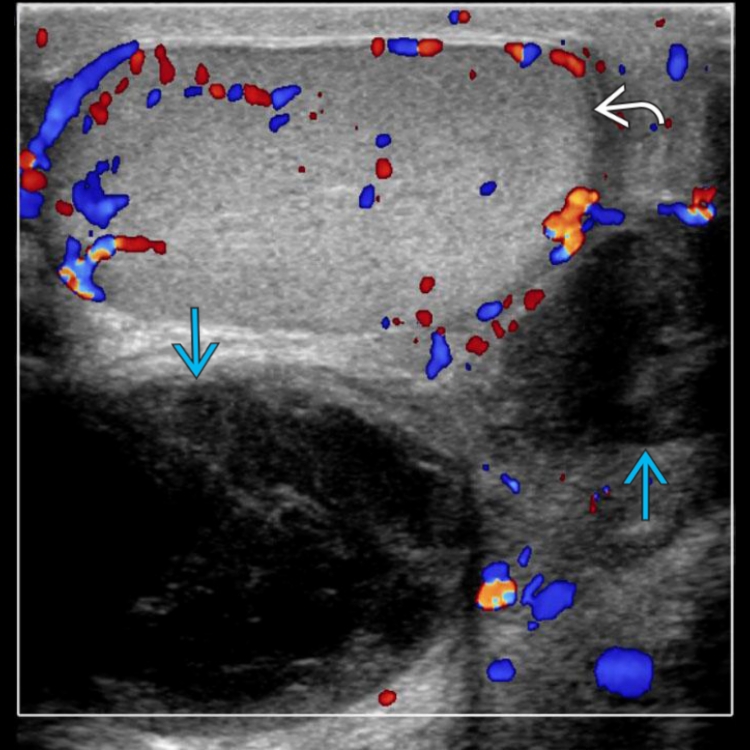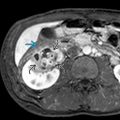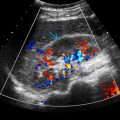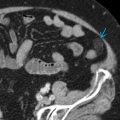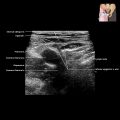KEY FACTS
Imaging
- •
Heterogeneous testicular parenchyma or contour abnormality of testis in setting of scrotal trauma
- ○
Disruption of tunica albuginea very specific for testicular rupture
- ○
- •
Extratesticular hematocele: Most common finding in scrotum after blunt injury
- •
US appearance of hematoma depends on time elapsed since trauma
- •
Intra- or extratesticular air in scrotum, missile track &/or foreign bodies (bullet/pellet) indicative of penetrating injury
- •
Spermatic cord hematoma appears as heterogeneous, avascular mass superior to testis
- •
Color Doppler useful to determine viable portions of testis
Pathology
- •
Sports injuries (> 50%), vehicular and ballistic trauma, and iatrogenic
Clinical Issues
- •
Unless repaired within 72 hours, salvage rate only 45%
- •
Follow-up of conservatively treated testicular hematomas essential due to increased risk of infection, which may result in orchiectomy
- •
Orchiectomy (total or partial) performed for nonviable testis in testicular rupture
- •
Surgical exploration and drainage must be performed for large, intratesticular hematomas
- •
Tumors may be discovered after trauma; consider tumor if internal color flow in intratesticular lesion
Scanning Tips
- •
Focal disruption of tunica albuginea = testicular rupture in setting of trauma
 in the scrotal cavity. The patient was status post recent vasectomy with new-onset scrotal swelling. Testis
in the scrotal cavity. The patient was status post recent vasectomy with new-onset scrotal swelling. Testis  is normal.
is normal.
